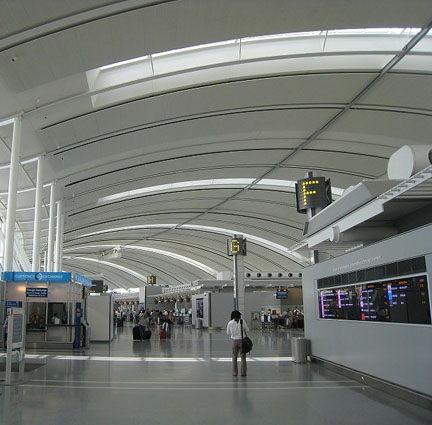Outsourcing information technology functions has become common for large companies over the last decade, but when you have 40 partners to negotiate with the contractual discussions can become complex, to say the least.

Gerald Carpenter, legal counsel at Toronto Pearson International Airport, discovered this when he led the team tasked with navigating the legalities of outsourcing the IT system that serves the Greater Toronto Airports Authority, which operates Pearson, and the 40 air carriers that use the airport.
Previously, the internal IT department at the airport provided all technology services. In 2009, it was decided the airport would de-bundle its IT services and have an outsourced partner — IBM — take over provision of services. The idea to outsource came from a desire to have greater control and visibility of costs.
“We wanted to de-bundle for a number of reasons including transparency. The recipients of the services in this kind of situation often start to not understand how much it costs and you wind up with a service that might not be provided as efficiently as it could be,” says Carpenter.
A new IT deal would change the airport’s contract with its airline community and open up the process to many governance issues. An added complication was that IT usage varies widely by airline and the new IT contract would have to be customizable.
“IT is a pretty significant component of an airport. Different carriers also have different IT needs,” says Carpenter. “If, for example, a carrier uses kiosks to check people in then the needs are more so than one that might not have that service. If you have remote check in that changes things as well.”
Carpenter had support on the project from Richard Coleman, a partner with Osler Hoskin & Harcourt LLP but was the main point person on the deal. They worked alongside IBM’s senior counsel Matt Snell in developing the terms of the agreement. “For anything outsourced I like to maintain a pretty tight degree of control over things,” says Carpenter.
In July 2010, IBM began offering de-bundled IT services at Toronto Pearson. The contract was negotiated over hundreds of hours sitting with Coleman and Snell, says Carpenter. “We had the contract on the screen going through it clause by clause, having to deal with all the complications of dealing with a contract that applied to all parties.”
The airport’s lawyer says the deal really became a concession agreement. “We developed a standard form of contract IBM would enter into with each individual carrier under which they would provide services and have the fees allocated within a fee allocation model,” he explains. “Each contract was extremely detailed.”
The airport authority also developed its own contract and risk allocation model. Fees were based on a collective distribution. “We had done this before in a less formal way with our de-icing facility,” says Carpenter. “But we didn’t have all the individual agreements.”
Snell says one of the unique aspects of the deal was the governance model that was created, which included the airlines, the GTAA, and IBM. “The fact there is this expansive governance committee with oversight over the entire operation in terms of what is covered in the agreement also gave the airlines comfort that they had a say leading into the deal and going onward. They can see more of the details than they used to when their IT was bundled. Now the costs are more visible.”
Carpenter held twice-weekly meetings with the air carriers to keep them informed. Those meetings involved both legal members of the air carrier community and the business unit staff.
“It’s challenging to reconcile all of the respective needs. If you have a little air carrier that brings in passengers in the tens of thousands their interest and needs are different from Air Canada’s, which brings in half of our 32 million people a year. The scale of operations is vastly different but when we’re doing these things we have to do it in a way that meets all of our carriers needs and not just those of our significant customers.”
Carpenter would not disclose how much the GTAA is saving with the new outsourced model, but indicated it amounts to “significant savings.”

 Gerald Carpenter, legal counsel at Toronto Pearson International Airport, discovered this when he led the team tasked with navigating the legalities of outsourcing the IT system that serves the Greater Toronto Airports Authority, which operates Pearson, and the 40 air carriers that use the airport.
Gerald Carpenter, legal counsel at Toronto Pearson International Airport, discovered this when he led the team tasked with navigating the legalities of outsourcing the IT system that serves the Greater Toronto Airports Authority, which operates Pearson, and the 40 air carriers that use the airport.